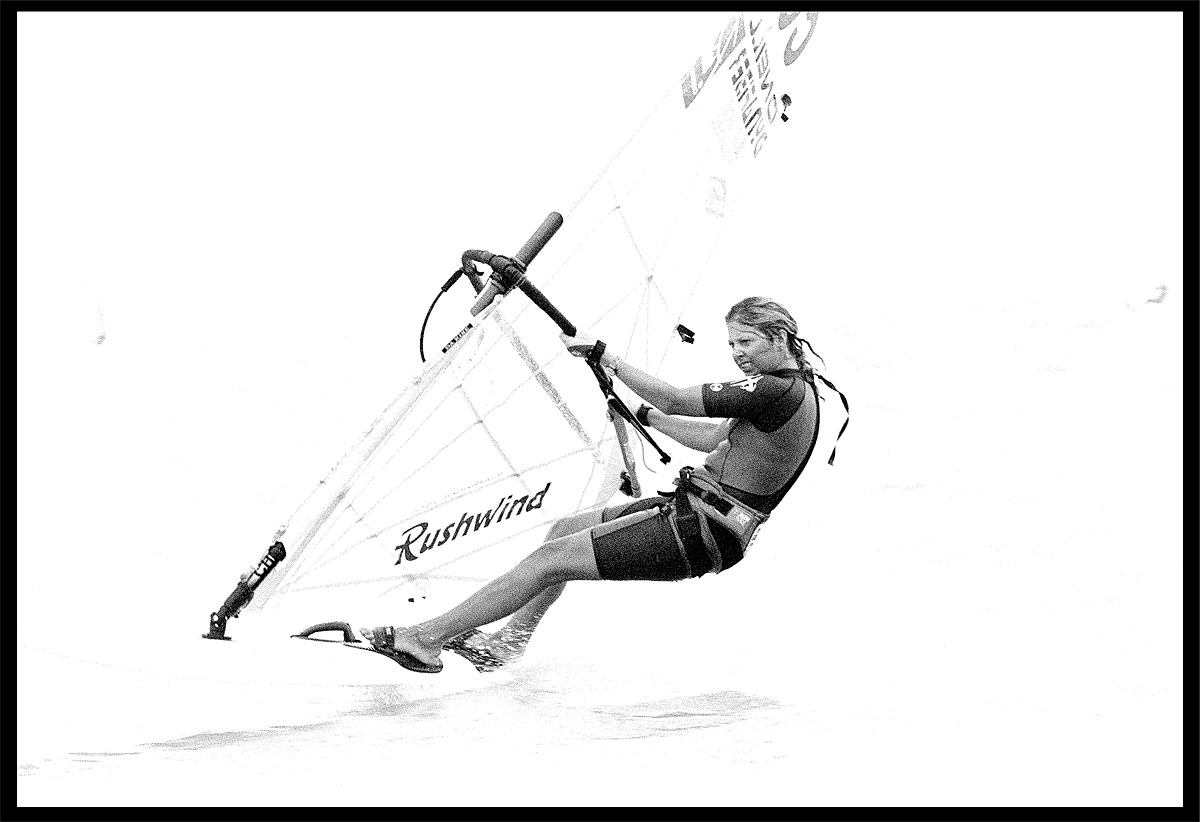SPEED SAILING is more than just an adrenaline rush, and of course the old motto, “No pain, no gain…” rings true on occasion, but what a satisfying sport for those who thrive on pushing the limits! The crux of the whole thing is “Go as fast as you can go…” in a straight line. Sounds simple; but there is a lot to it. Success in speed sailing comes from knowing your equipment and testing its limits, as well as yours, so that you are able to make methodical changes with regard to gear, technique and tactics. Speed sailing is a unique sport, but anyone can do it, even if only to improve their top-end speed. It’s a matter of learning what you can expect from yourself and your equipment in any wind and water conditions.
Off-the-water preparation
Take a day and rig all of your equipment. Try to rig each sail to look like the rest, regardless of size. When you’re sailing and need to change sails, it will be comfortable and natural to go from one size to the next. When you tune the sails, make sure to downhaul enough, otherwise your sail won’t be working efficiently. If your sail still doesn’t feel powerful enough and you know that it’s the right size, try letting out some on the outhaul so it becomes a little fuller. Use equipment suited to the conditions you’ll be sailing in.
As for board set-up, start with the footstraps in the rear position, and if the water’s on the rough side, just try moving the front strap forward for better board control. The mast track placement is also very important! You’ll want to try it in a few positions before you decide the best spot for off-wind sailing. Most likely it’ll be near the rear of the mast box, but start just forward of the center position and work backwards so you feel the effects of changing the placement. It will differ from a little sluggish and grippy to light and quick. It’s the light and quick that your shooting for.
Fins are always a major consideration. Begin with a good quality slalom fin. Nobody can be fast if they’re out of control, and the fin in many instances is responsible for top-end control. A fin that’s too big will give you too much lift, and you’ll begin to tailwalk or lift out of the water and need to sheet out to regain control. Too small of a fin won’t be long enough to handle the sail and spinouts will start occurring. Good fin selection comes with practice, so pay attention to the sail and fin combinations that work well for you.
On-the-water testing!
Sail around a little and see how things feel. Make your adjustments one at a time so you know which changes make a difference. The testing process is an endless challenge and requires great attention to detail. Really get to know your equipment! Sail it upwind, downwind, overpowered, perfectly powered and underpowered. When you are in control of your equipment in all conditions, start to look at the water and wind to find the fastest path for you.
Booms, harness lines and harness all require adjustment to suit the conditions. Boom height should be just above your shoulders in steady sailing weather. If the conditions are strong and gusty, lower the boom to gain control and stability. At the same time, shorter harness lines are good for smooth sailing, and longer ones help in hairy conditions. The harness spreader bar can stay in the same position you’re comfortable with, Normally, the lower the position the better. Once again, try a few alternatives before you decide what’s best for you.
Here’s looking at you!
You’re the one who wants to go fast, you’ve looked at your equipment and understand its advantages and limitations, the next step is technique.
Let’s consider technique. A speedsailing stance should be relaxed and steady. Weight should be on the back foot with the front controlling the boards’ flatness relative to the water. Extend your arms to the booms. Grip comfortably at a position that doesn’t require a lot of movement. Look ahead, plan your route according to the water and read the gusts. Prepare for acceleration–don’t sheet out! Look for gusts, when you find them, be ready to sheet in! Speed sailing is acceleration! Expect it and enjoy going fast!
Things to concentrate on:
• How did the board, the sail and the fin feel?
• What effects did the wind and the water have on your speed?
• Did you feel comfortable and in control? If not, why?
• Was the sail steady, or did it require adjustments? Was it powerful enough?
• Were the changes you made helpful? What should you consider next time?
• How would you rate your board speed?
Remember, keep focused and look for speed. Try different things to go even faster. If you hit maximum, figure out why it was top speed. No detail is too small to consider!
SHEET–IT–IN AND HAVE FUN!


